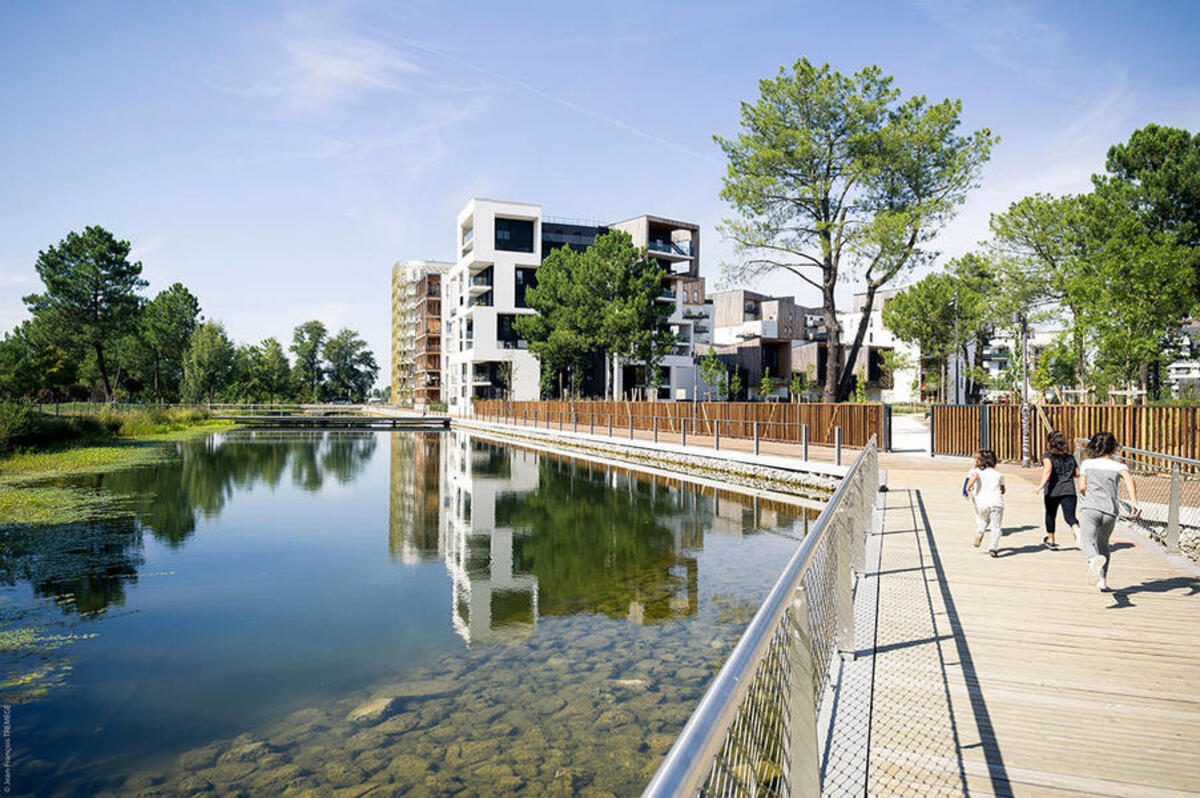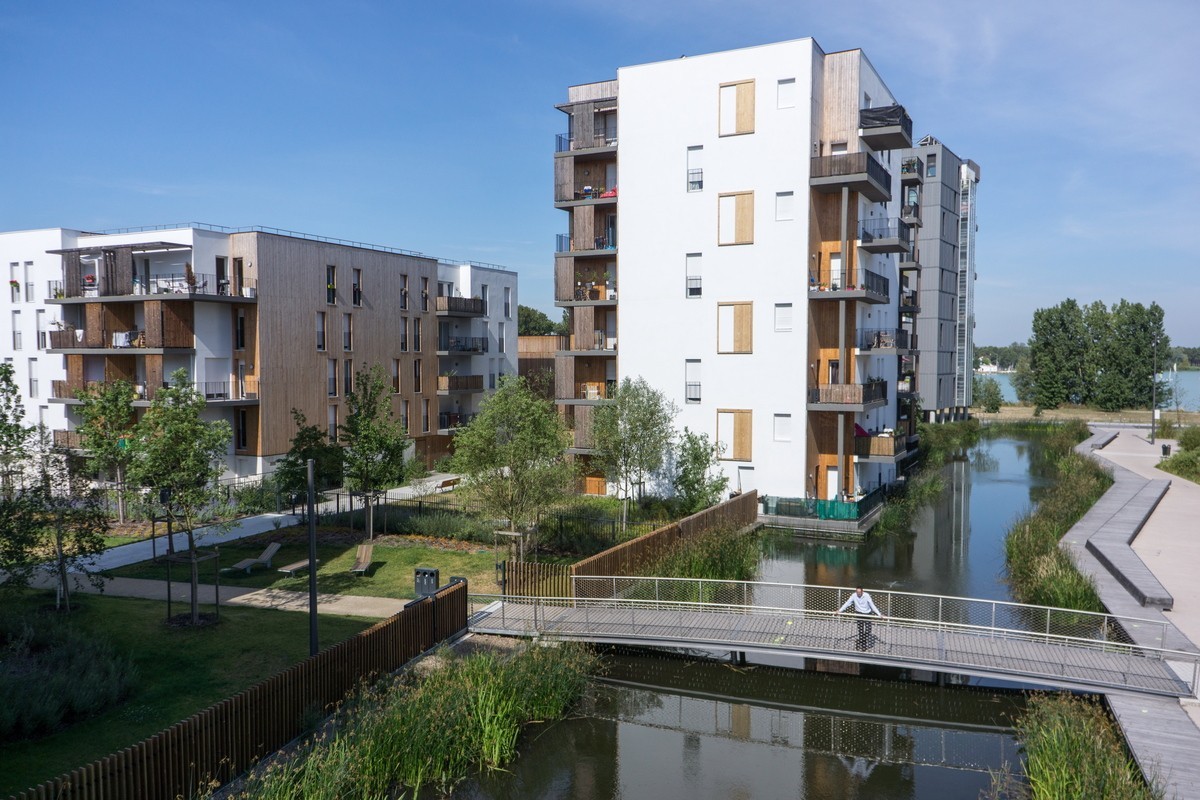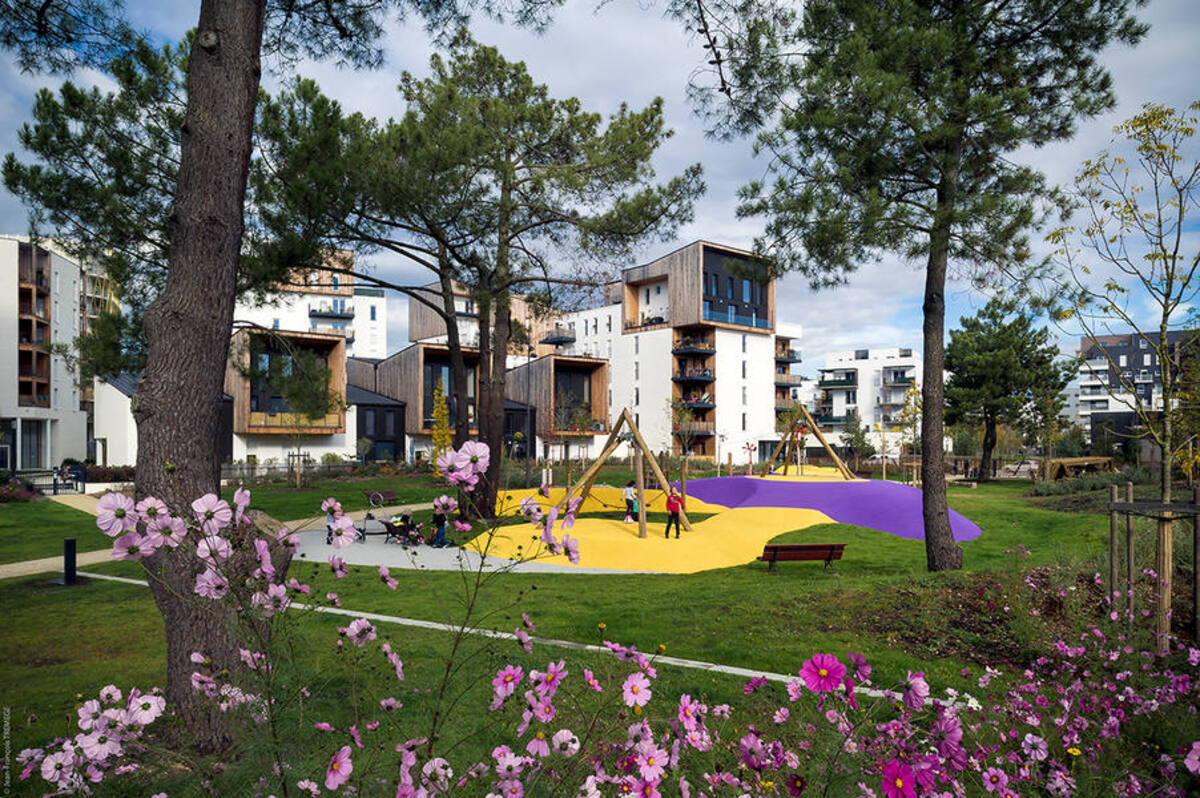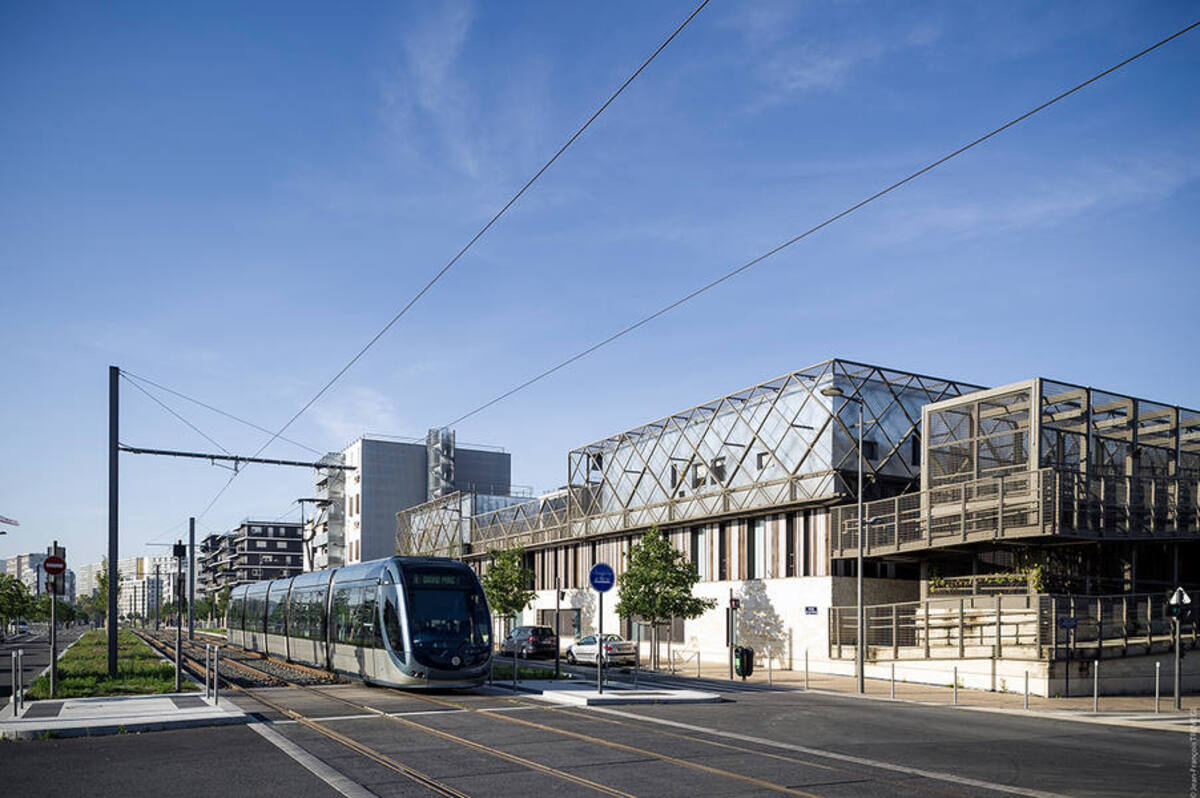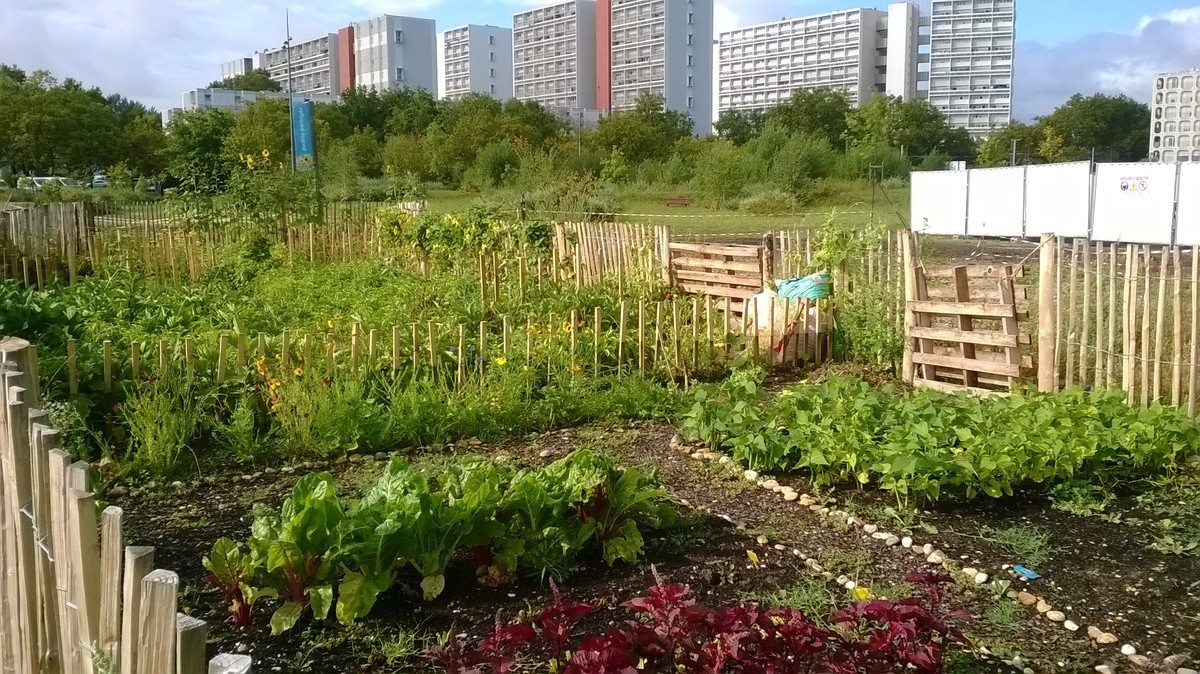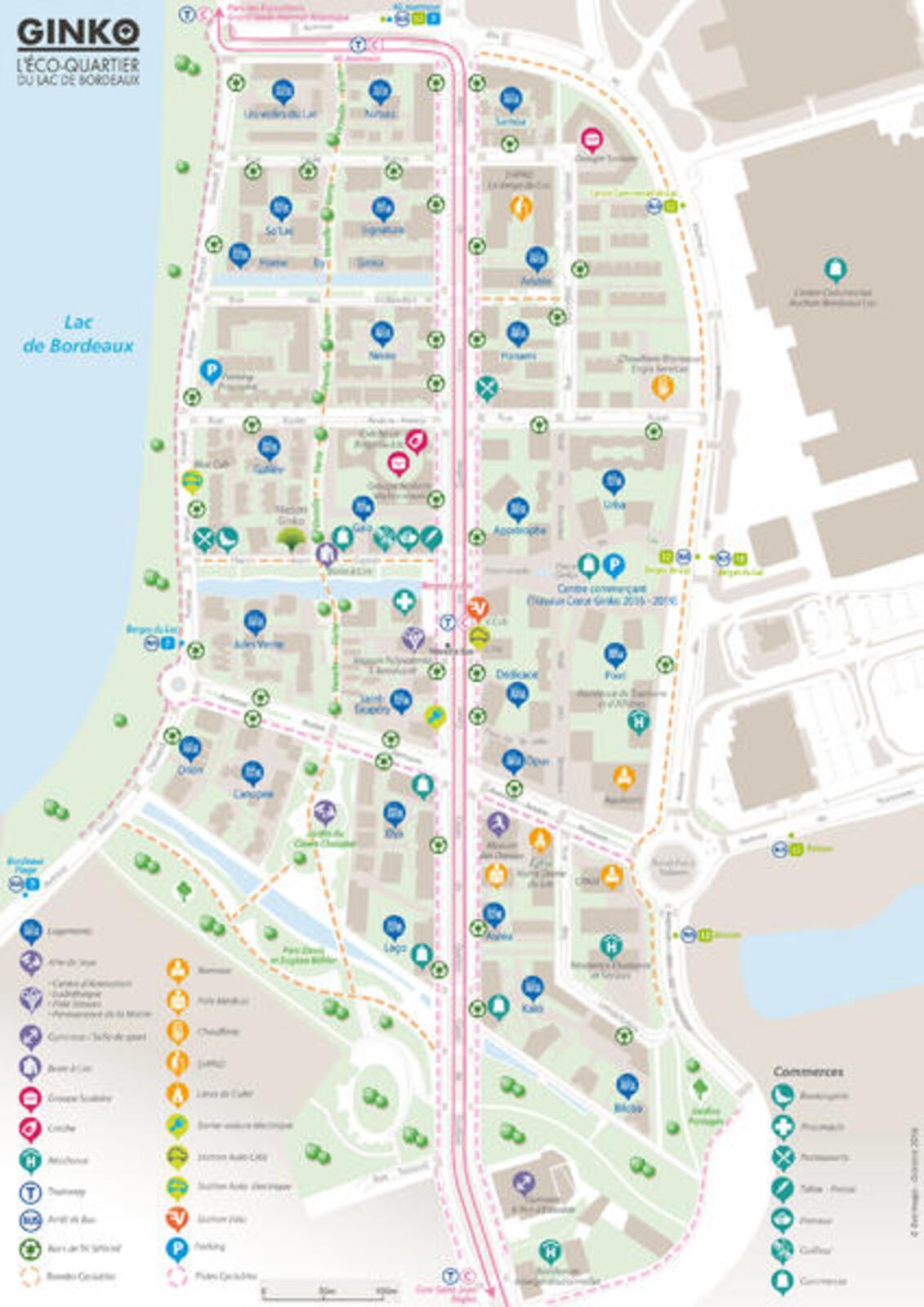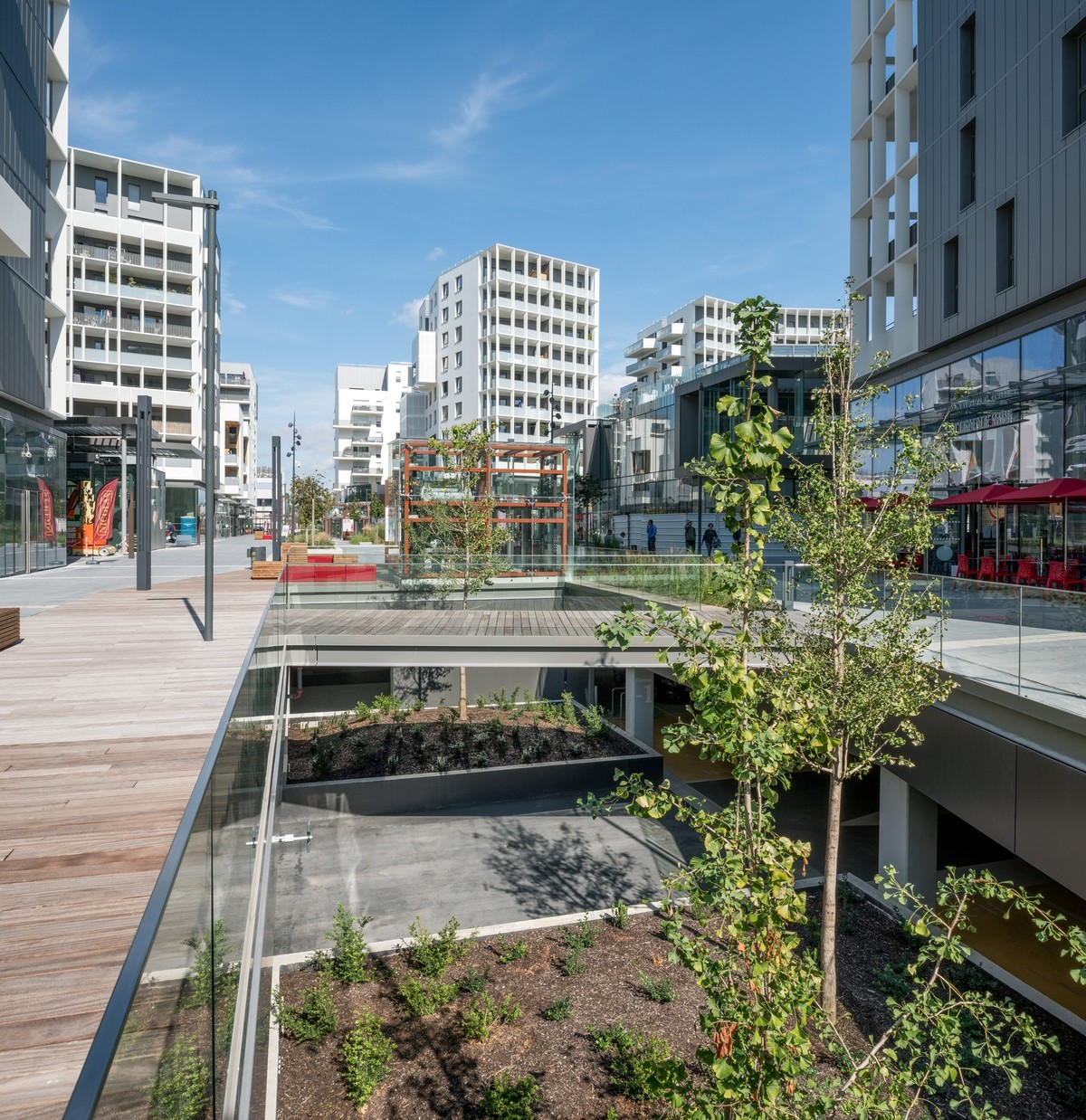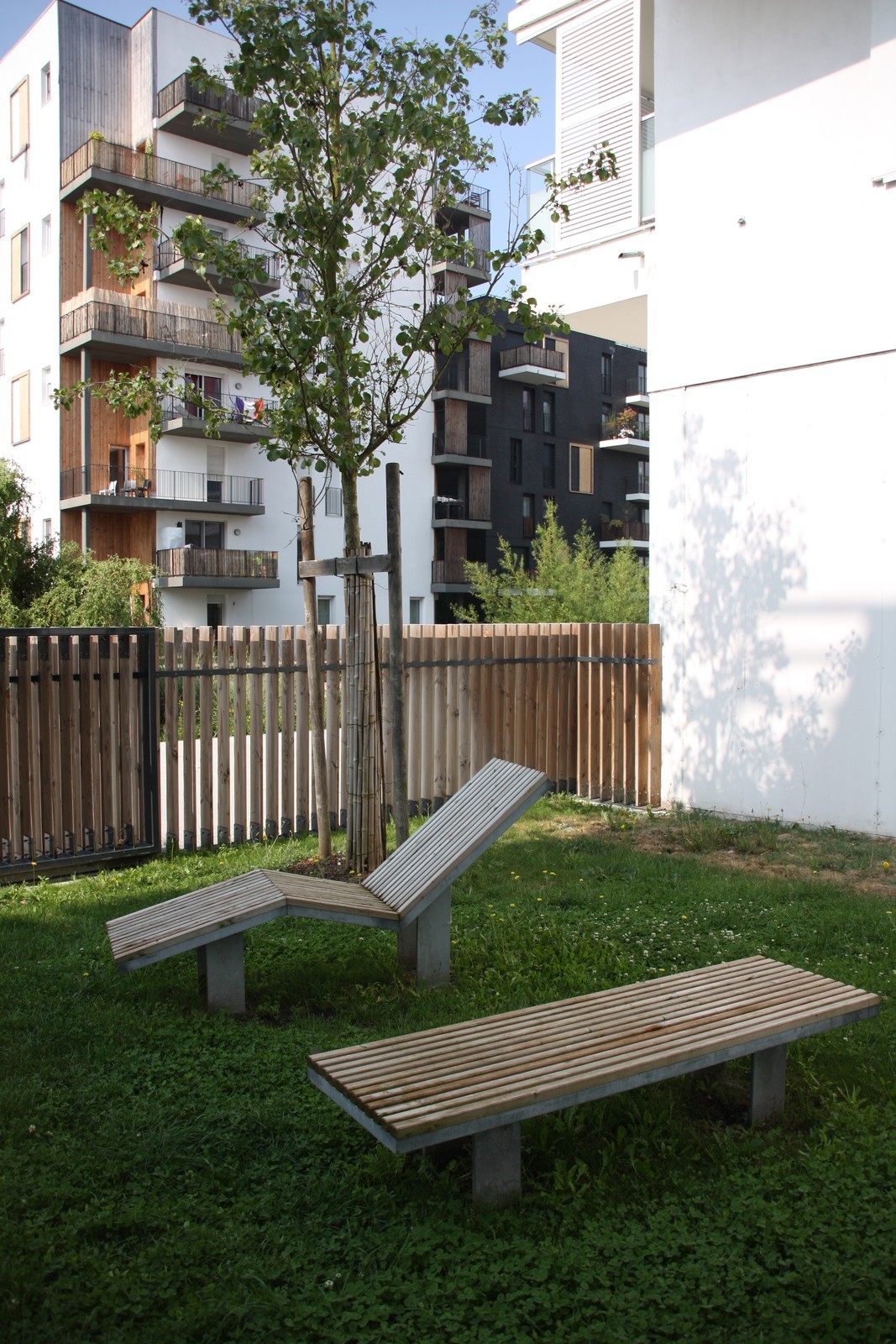Ginko district
Last modified by the author on 30/03/2021 - 10:11
- Address 1 - street : cour de Québec 33000 BORDEAUX, France
- Starting year of the project : 2006
- Delivery year of the project : 2022
Certifications :
-
32 ha
Ginko is one of the emblematic achievements of Bouygues Immobilier UrbanEra's approach, which supports local communities in creating sustainable neighborhoods that will make up the city of tomorrow.
Located opposite Lake Bordeaux, and bordered by Denis and Eugène Bühler Park, Ginko is a unique place to live! Served by 2 tram stops, 3 bus lines and numerous cycle paths, Ginko has managed to preserve gentle journeys for a better quality of life just a few minutes from downtown Bordeaux.
Its architecture is varied and bioclimatic: its low-consumption buildings and the use of renewable energies, in particular the biomass boiler, help to preserve the environment. Each condominium is bordered by the green alley, a footpath that crosses Ginko from North to South, and refocuses around the heart of private and landscaped islands.
As part of a strong societal approach, neighborhood life is animated thanks to the presence of teams from the Sarah Bernhardt multi-purpose house, neighborhood managers from Ginko & Co and neighborhood associations such as Anim'Ginko which regularly offer many activities for young and old. The many local shops located on Place Jean Cayrol and Cours de Québec participate in this unique neighborhood life in Bordeaux.
Programme
- Housing
- Offices
- Businesses and services
- Public facilities and infrastructure
- Public spaces
- Green spaces
Project progress
- Operational phase
Key points
- Quality of life
- Mobility
- Biodiversity
- Energy /Climate
Approaches used
- Ecodistrict national label
Certifications
- Ecodistrict national label
- BREEAM for communities
Photo credit
Francois-Xavier Lemoine
Jean-Francois Tremege
Office floor area
25 000 m²
Commercial floor area
30 000 m²
Housing floor area
170 000 m²
Number of residential units
2 700
Project holder
Quality of life / density
As part of a strong societal approach, neighborhood life is animated thanks to the presence of teams from the Sarah Bernhardt multi-purpose house, neighborhood managers from Ginko & Co and neighborhood associations such as Anim'Ginko which regularly offer many activities for young and old! The many local shops located on Place Jean Cayrol and Cours de Québec participate in this unique neighborhood life in Bordeaux.
Ginko is a great place for sports activities! The gymnasium offers handball and rock climbing, pilates are offered at the canopy studio, the lake has a dedicated sports course and water activities with the sailing center. BMX, and tennis with the Bordeaux Asptt stadium or golf are available a few minutes away.
Ginko offers a complete school offer with a nursery, a public nursery and primary school, and even a Montessori school since January 2019!
Ginko also includes gardens that are shared, concerted, designed, built and operated by residents and partners in the social and solidarity economy (ESS).
The district offers local services: La Poste relay, dry cleaning, childcare, DIY ... It promotes better living together: events and demonstrations (garage sale, seasonal markets ...). It also has a small resource center, a coworking space and a café.
Coeur Ginko, the shopping center of the eco-district offers its residents and users 60 commercial units of 30m² to 6,000m² spread over 28,000m² GLA, ie an average of 467m² per cell. The food and catering trade offer is complete, qualitative and meets the needs of residents and users of the center. With the objective of a perfect complementarity of activities with the commercial zone of the lake, the center also proposes a diversified offer of leisure trade. This mix of signs at the foot of the building makes the Ginko shopping center a real place of life and conviviality in the service of social links.
The shopping center also obtained a BREEAM Very Good Certification in the design phase, the National Ecoquartier Label obtained in 2014 is the 1st label awarded to a public operation carried out by a private developer-promoter.
Mobility strategy
The shopping area is very well served by public transport: bus, tram, park and ride.
Numerous facilities facilitate the reception of soft mobility: covered bicycle parks at all ends, recharging stations for electric vehicles in the car park, self-service electric car-sharing stations on the edges of the center ...
Some data: 50% of road spaces are devoted to soft modes and to the tram; 6km of cycle routes; nearly 300 bicycle parking spaces in the neighborhood; a green alley between 15 and 25m wide; 30 zones in the heart of the district, and meeting zones limited to 20km / h.
Water management
Within the eco-district, water resources and consumption are saved and optimized:
- the water collected is rejected as much as possible towards the Lake via two watersheds and three channels in communication with the Lake
- water storage tanks in the islands for watering green spaces
- water for sprinkling green spaces, Parks, and Venelle verte is taken from the canals
- phytorestoration of canal water by aquatic plants
The natural infiltration of water is favored there:
- 40% of the area of the permeable district
- 15 to 35% of the surface of the islands permeable
- large landscaped areas
- limited waterproofing of roads: large adjacent planted areas, network of vegetated valleys
Waste management
Waste management is operated by the “producer / payer” model in this way each brand can influence its own private charges by strengthening its sorting of waste. In this way, the waste generated by the Center can be recycled and recovered more easily.
Biodiversity and natural areas
To preserve ecosystems, 150 trees have been preserved and more than 1,300 trees have been planted. The shrub species chosen are adapted to the local climate. Green roof terraces combine energy performance and nature in the city. A 4.5 hectare park has been set up for the inhabitants of the district as well as a 1 hectare green Venelle.
In order to contribute to the fight against urban heat islands, 40% of the area of the district is permeable and 3 canals have been planted in order to treat pollution (phytorestoration of water over a total length of 1.5 ha at total) and participate in local refreshment.
In addition, rationalized water management has been put in place, for example with the recovery of rainwater from roads in vegetated valleys and water from roofs in tanks within the islands to irrigate green spaces. Irrigation water for green spaces is also taken from the canals.
Finally, to encourage the involvement of local residents, gardens shared and co-managed by residents have been created.
Climate adaptation, resources conservation, GHG emissions
The air conditioning system is a tempered water loop supplied by a biomass boiler pooled with district heating. Thus, Ginko is the first eco-district in France heated to 80% by local and renewable energies.
The residents were made aware of energy savings through the welcome booklet and the intervention of Unicité-Médiaterre teams.
50% of road spaces are devoted to soft mobility, 300 bicycle parking spaces Ginko is served by 3 tram stops less than 300 m from homes and offices.
Reasons for participating in the competition(s)
- Écoquartier bas carbone (chaufferie biomasse, modes de déplacements doux, utilisation de matériaux locaux)
- Impact positif sur la biodiversité (rejet d'eau vers le Lac, favorisation de l'infiltration naturelle de l'eau, économisation de l'utilisation de l'eau)
- Créateur de lien social (jardins partagés)
- Offre de services multiples




